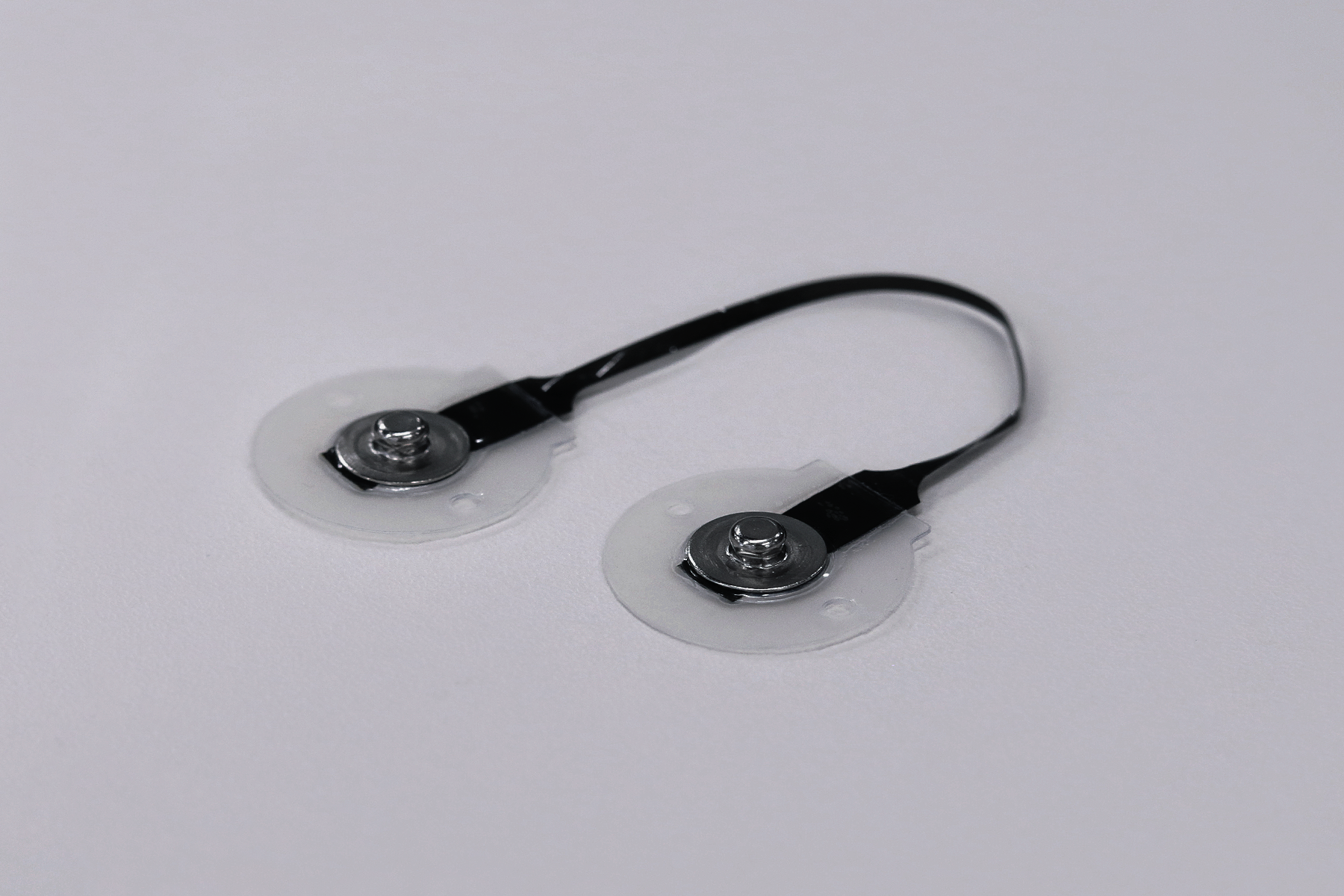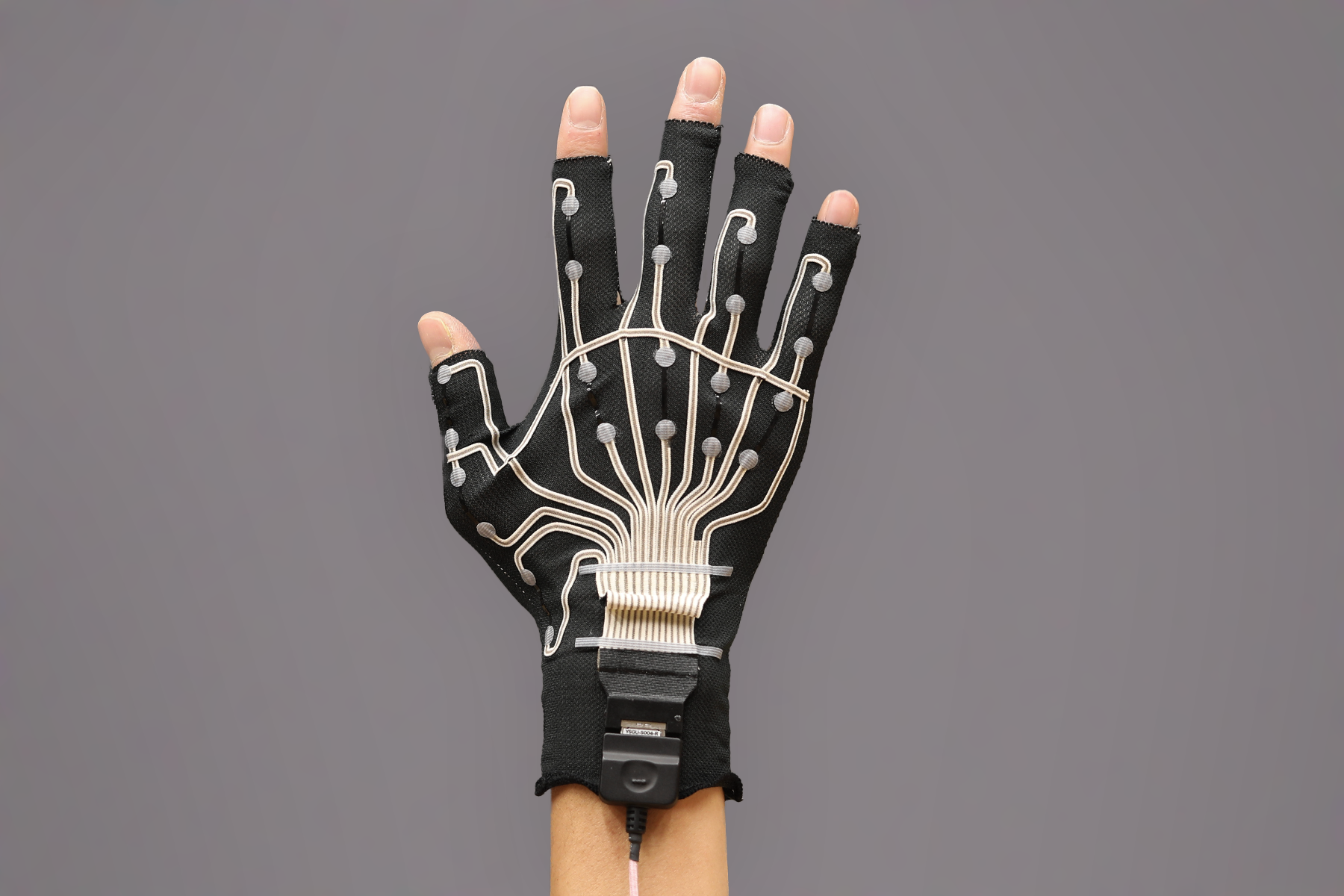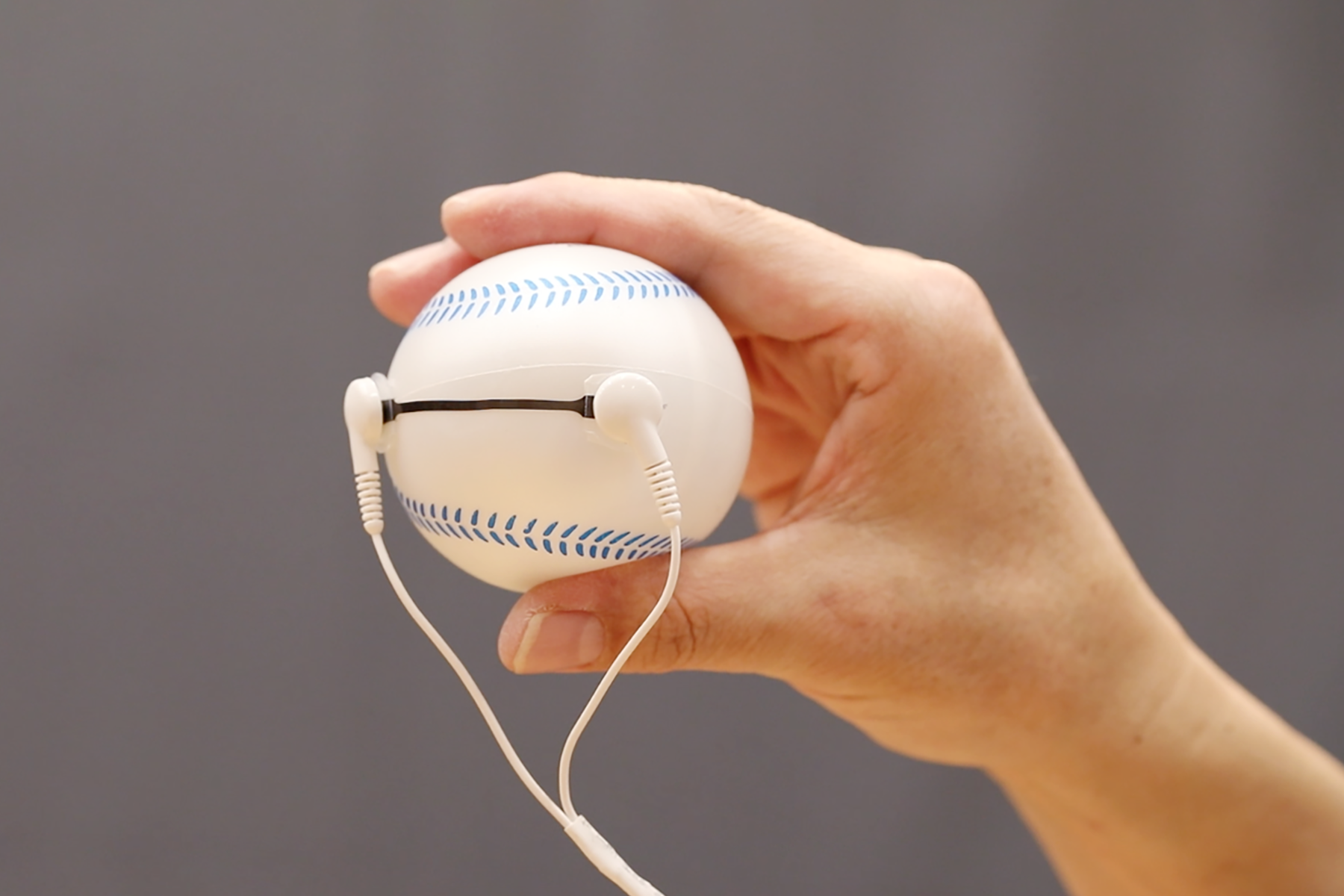Stretch Sensor Technology
GummiStra®

Rubber-like Stretchable Strain Sensors
We have been developing “GummiStra”, a rubber-like stretchable strain sensor that is based on thin film. This textile-based wearable sensing system is used to detect human motion in real time. GummiStra detects a wide range of small to large strains (displacements) by sensing changes in resistance. When worn on body surfaces, it can precisely detect fine finger motions and muscle movements, and collect strain data.
Detect Fine Human Motions
With excellent wearability and an affinity for human skin, GummiStra can be used to accurately measure the slightest human movement, such as the bending of joints and the movement of muscles. It can be pasted directly on your body. Through joint development with a variety of manufacturers, we can achieve unique wearable systems.


Resistive Change Type Strain Sensor Capable of Detecting a Wide Range of Small to Large Displacements
GummiStra can measure a wide range of small to large strains (up to twice in length), both statically and dynamically, with only a single device. It is also thin, lightweight, and easily formed into various shapes. Since the sensor uses changes in resistance change for detection, it does not require special circuitry. Multi-channel systems can be achieved easily.


Sweat and Water Resistant
GummiStra is resistant to sweat and water, and can be used outdoors and while exercising.

How it Works
GummiStra consists of an aligned carbon nanotube sheet that is covered and combined with a special urethane elastomer resin layer. The resistance at both ends increases linearly in response to strain. The detection limit is a strain of 200% (twice the length).
Future Plans
We aim to apply this system to the detection of human motion, which is difficult to detect with optical motion capture systems.
- Visualization of performance: digitization of arm and finger movements while playing a musical instrument
- Enable the detection of body movements and muscle movements in each part of the body through sensing systemization, for use in the field where it is difficult to use optical systems.
- Visualization of workers in manufacturing factories
- Expansion to outdoor work activities, sports, and rehabilitation
- Concurrent engineering in the development process for manufacturing
